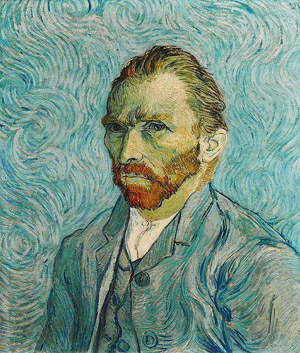Can an image tell us about a person?
We present yet another article from Lizzy Vartanian’s Gallery Girl blog! This time we wonder if a painting or photograph can reveal something about a person. Here is the link to the original. The translation is mine! :)
Last week I took a little trip to the Saatchi Gallery to see the photographs, taken by Sam Taylor-Johnson, of Gabrielle Coco Chanel’s apartment. It’s no secret that I am a fashion fanatic and I expected the images of Chanel’s apartment to give me a vague idea of her personal space so that I could better understand her character. Yet, I was disappointed.
First, I blamed my dissatisfaction about the exhibition on Taylor-Johnson’s images. That said, after a week I thought back on the exhibition and my thinking changed, moving away from Chanel completely. Taylor-Johnson’s images are dark. All the color has been sucked out of the space and more emphasis is given to the architectural elements of the apartment rather than what is inside. From these images, anyone not previously familiar with Chanel might get the impression that it was dull and monotonous, and that is almost certainly not the case. The photographs are interpretations of Taylor-Johnson. Perhaps she depicted the apartment in this way to give the sense of lifelessness now that Chanel is gone. However, it would be difficult to argue that these photographs really say anything about Chanel herself.
The saying goes that a picture is worth a hundred words, but is that true?
 During my early college years (I am a graduate student in Western art history), my professors always insisted that portraits were rarely an accurate picture of the character being portrayed. Yes, these images, commissioned by the elite and the aristocracy, would bear some resemblance. Often the artists would even make direct arrangements with the patron about payments. Artists’ records throughout history show that everything from the way the subject is dressed to their facial expressions and other elements would have been discussed beforehand. Almost always, these portraits would have been done to flatter the patron and would often have circulated as prints, constituting the only images of rulers to which the lower classes could have access, so these had to be well thought out and favorable. Taking all this into account, it is more than likely that such images were contrived and did not show the real person, rather what was demanded of them.
During my early college years (I am a graduate student in Western art history), my professors always insisted that portraits were rarely an accurate picture of the character being portrayed. Yes, these images, commissioned by the elite and the aristocracy, would bear some resemblance. Often the artists would even make direct arrangements with the patron about payments. Artists’ records throughout history show that everything from the way the subject is dressed to their facial expressions and other elements would have been discussed beforehand. Almost always, these portraits would have been done to flatter the patron and would often have circulated as prints, constituting the only images of rulers to which the lower classes could have access, so these had to be well thought out and favorable. Taking all this into account, it is more than likely that such images were contrived and did not show the real person, rather what was demanded of them.
Regarding artists’ self-portraits, many art historians would have strongly argued that they too would have depicted themselves the way they wanted to be seen.
Almost like today’s selfies, artists could alter the way they portrayed themselves, who knows, perhaps by changing the way they dressed, perhaps dressed as rich people, or adding an emblem of their ruler. Just as we literally filter and edit the way we show ourselves on social media. So with regard to portraits, it can be said that the image gives a distorted view of the person being portrayed.
Consequently, I would say that if an image can really speak about a person, it would probably be best to think about the artist’s intention when making the image, although the subject does play its part. At least two people are needed to create an image of a character, the subject and the artist.
Warning: the translation into English of the original Italian article was created using automatic tools. We undertake to review all articles, but we do not guarantee the total absence of inaccuracies in the translation due to the program. You can find the original by clicking on the ITA button. If you find any mistake,please contact us.





























